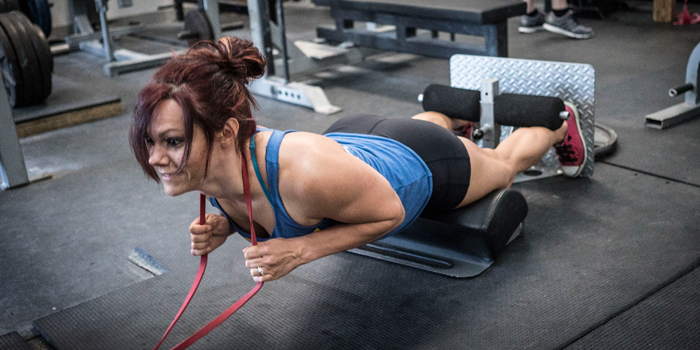
What are the benefits of a GHR? The GHR or Glute Ham Raise is an exercise that strengthens the posterior chain to optimally benefit powerlifters, sprinters, and any athlete interested in incorporating both knee flexion and hip extension in the manner that they’re actually used when they compete in their chosen sport. Unless you compete where kicking motions are involved (such as with soccer or martial arts) then the knee extension and flexion found through the use of leg extension and leg curl machines is not very practical.
As the elitefts GHR description states, “the GHR is one of the most important movements of any training program. Very few movements train the hamstrings at both joint angles (hip and knee). This is critical because this is how your body works when it runs, jumps, squats and pulls. If you’re going to do the movement we believe you should get maximal results.”
If you train at home or even in a commercial gym that doesn’t have a GHR, then the Home GHR may be your best option. Yes, I may be biased since I designed the Home GHR, but the Home GHR is as, if not more, effective than a full sized GHR at a fraction of the price.
I’ll explain why. Watch every video describing how to properly perform a Glute Ham Raise, and you’ll see the lifter going just to parallel with the floor. Here are some examples:
Dave Tate explaining how to perform a proper glute ham raise in ONE movement:
Mark Watts explaining how to add difficulty to the GHR motion (once again only having Derek Dolgner extend to a position parallel with the floor):
Many users of the Home GHR state that due to the slightly increased angle and the fact that you can’t incorporate a hyperextension to develop momentum, that it’s actually more difficult than a full sized GHR. Here’s a video further demonstrating its benefits:
Not only is the Home GHR potentially more difficult than a full sized GHR (and therefore more effective), the user has the option of increasing or decreasing the level of difficulty simply by incorporating a push up for assistance. As their hamstrings and glutes become stronger they can use gradually less upper body assistance. Another benefit is the comfort level of it being located on the floor for beginners. I can’t tell you how many of my clients have said “I feel like I’m going to fall” while trying to use a full sized GHR for the first time.
Why not simply perform a "natural glute ham raise” instead of a GHR? Many lifters resort to crude makeshift movements by fixing their legs under a bar, leg attachment on a pulldown machine, or by using training partners to hold their legs. They then dub these "natural glute ham raises." Unfortunately, this just becomes another variation of a leg curl. Although the natural glute ham raise is a difficult motion, with a leg curl and a natural glute ham raise only the hamstrings are activated. With a Glute Ham Raise machine the hamstrings, glutes, lower back, and calves are all activate, creating a much more effective motion for the entire posterior chain.
The GHR can be used for multiple purposes:
- Increasing posterior chain strength with a sport specific motion.
- Increasing posterior chain hypertrophy by performing higher reps.
- Injury prevention by promoting better strength balance between the quads and hamstring.
- Excellent for use in increasing sprinting and jumping power.
- Ideal for increasing squat and deadlift strength.
- Ideal for increasing the strength of the posterior chain in one motion.
- Can be used for isometric holds as well as focusing on the eccentric motion.
- Can be used with the assistance of a band to make the motion easier.
- Can be used with a band or weight to add resistance to make the motion more difficult.
- Can be used for abdominal as well as many upper body motions.
Whichever GHR you opt for, it’s clear that this is a necessary exercise to optimize your performance as a powerlifter.
The Affordable and Effective Floor Based Home GHR
Header image courtesy of Tyler Marino










I purchased one from you about a year ago. I really enjoy using it but I am sill unable to do it without a band assisting me. I noticed in one of your videos, that the person using it, his knees were on the floor. I am positioned an inch or two and I am wondering if By lowering it, I may be able to do it without the band.
Thanks,
Mike